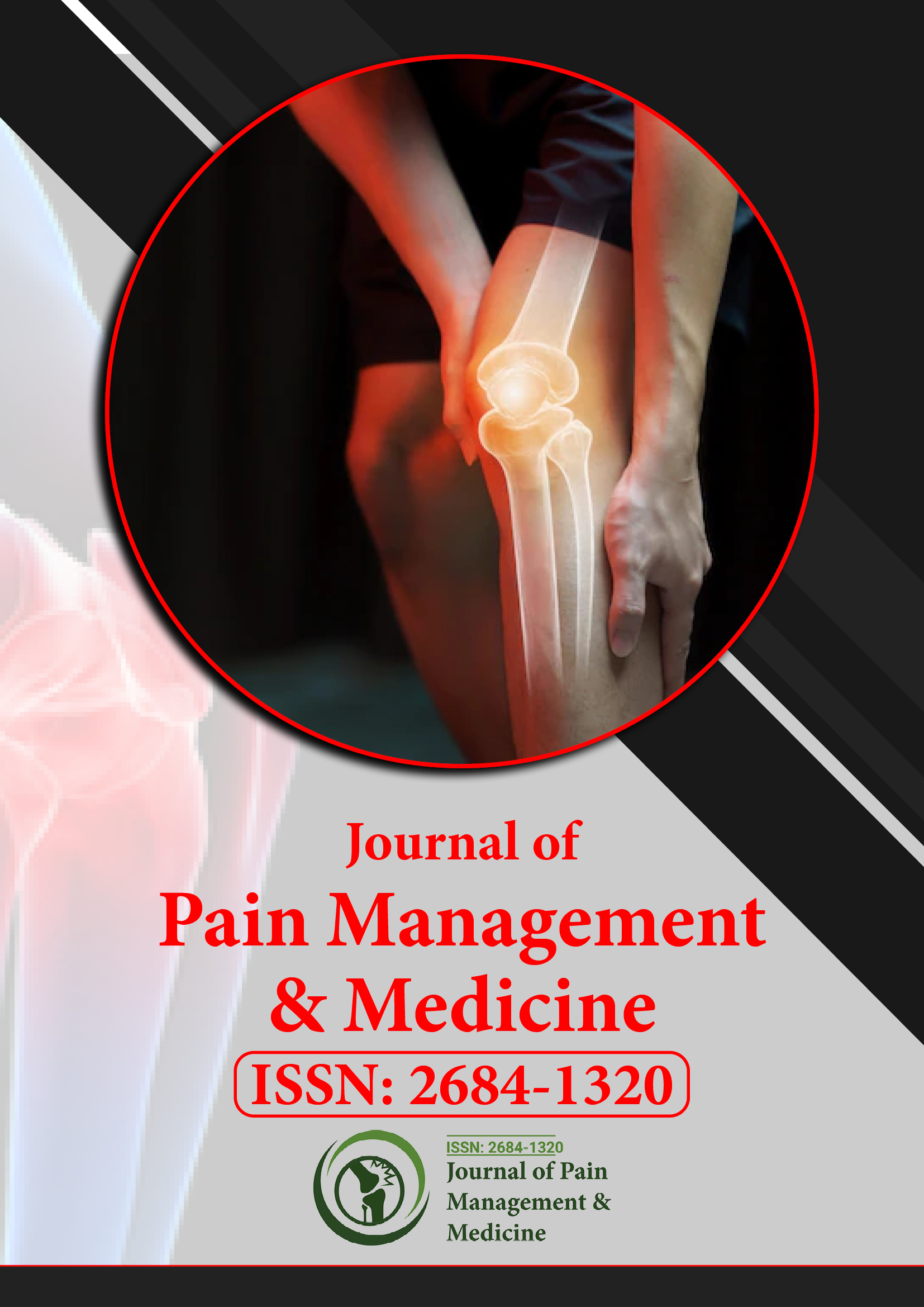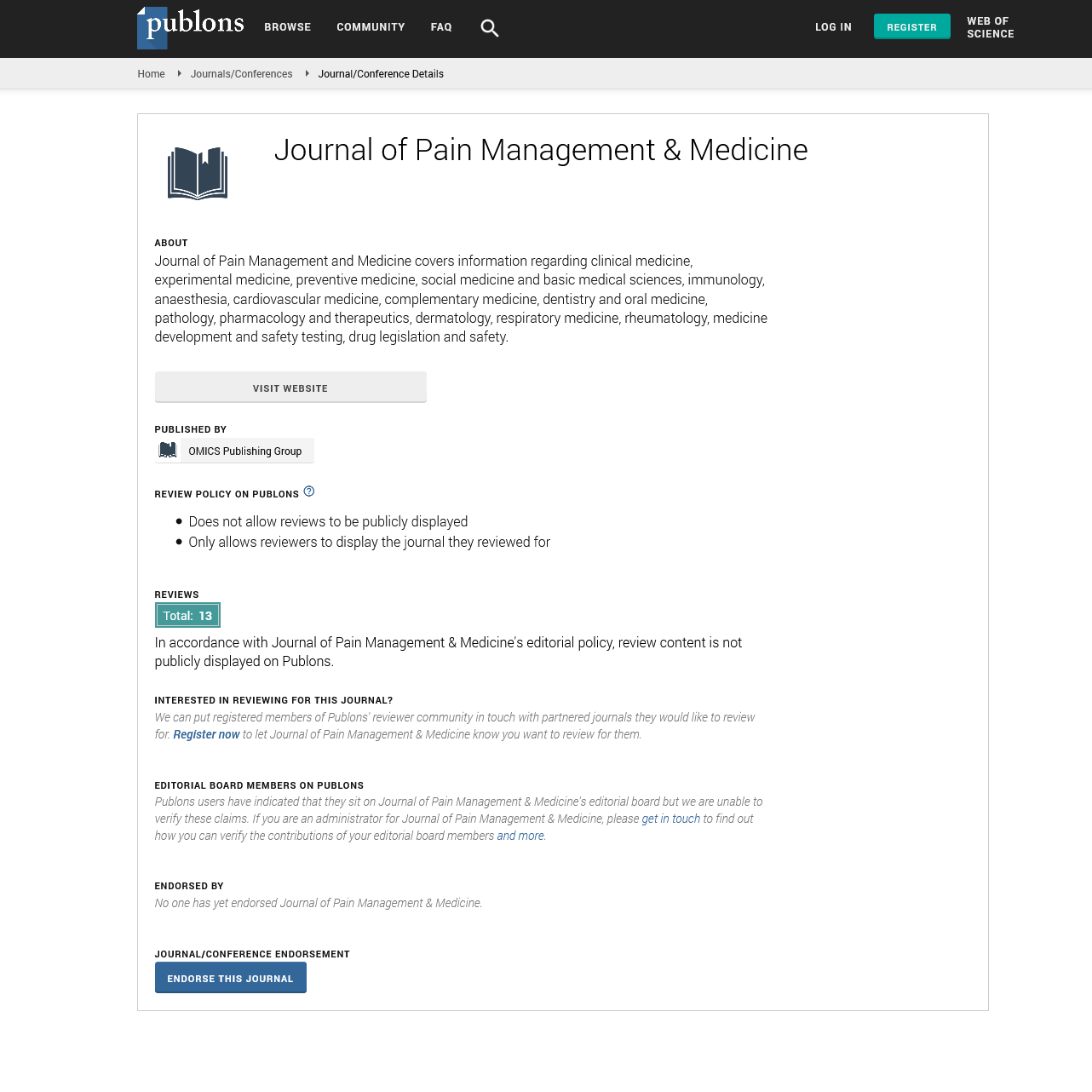Indexed In
- RefSeek
- Hamdard University
- EBSCO A-Z
- Publons
- Euro Pub
- Google Scholar
- Quality Open Access Market
Useful Links
Share This Page
Journal Flyer

Open Access Journals
- Agri and Aquaculture
- Biochemistry
- Bioinformatics & Systems Biology
- Business & Management
- Chemistry
- Clinical Sciences
- Engineering
- Food & Nutrition
- General Science
- Genetics & Molecular Biology
- Immunology & Microbiology
- Medical Sciences
- Neuroscience & Psychology
- Nursing & Health Care
- Pharmaceutical Sciences
Perspective - (2024) Volume 10, Issue 6
Physical Therapy Requires Rehabilitation and Improves Quality of Life
Rooker Willems*Received: 28-Oct-2024, Manuscript No. JPMME-24-27628; Editor assigned: 30-Oct-2024, Pre QC No. JPMME-24-27628 (PQ); Reviewed: 13-Nov-2024, QC No. JPMME-24-27628; Revised: 20-Nov-2024, Manuscript No. JPMME-24-27628 (R); Published: 29-Nov-2024, DOI: 10.35248/2684-1320.24.10.297
Description
Physical Therapy (PT), a dynamic and evolving field in healthcare, focuses on restoring movement, improving function and alleviating pain. It plays an essential role in the prevention, management and rehabilitation of injuries and chronic conditions. With its patient-centered technique and evidencebased practices, physical therapy addresses a wide range of health issues; as a result, it has developed into an essential element of modern medicine.
Fundamentals of physical therapy
Physical therapy is a branch of rehabilitative healthcare that emphasizes physical activity, manual techniques and various therapeutic modalities to increase healing and improve physical performance. Licensed professionals known as physical therapists evaluate and treat patients based on personalized care plans tailored to their specific needs. Physical therapy includes a wide range of specialties, including orthopedics, neurology, cardiopulmonary rehabilitation, pediatrics, geriatrics and sports medicine. Its primary functions involve.
Pain management: Using techniques such as manual therapy, exercise and modalities such as heat or cold therapy to alleviate pain.
Improved mobility and function: Restoring range of motion, strength and coordination for daily activities or athletic performance.
Rehabilitation and recovery: Enabling individuals that have recovered from surgery, injuries or diseases to maintain their lives.
Prevention of future injuries: Educating patients on proper movement posture and exercises to reduce the risk of recurrent issues.
Techniques and modalities
Physical therapists utilize a variety of techniques and tools to obtain therapeutic targets. These interventions are appropriate for the patient's condition, resulting in optimal outcomes.
Manual therapy involves physical therapies such as joint mobilization, lymphatic drainage massage therapy and myofascial release therapy. These methods aim to reduce pain, increase mobility and improve circulation. Exercise is the foundation of physical therapy. Patients perform specific movements to enhance strength, flexibility, endurance and balance. These exercises are frequently progressive, starting with basic movements and advancing to more complex patterns as recovery progresses. Modalities such as Transcutaneous Electrical Nerve Stimulation (TENS) and ultrasound therapy are used to manage pain and increase tissue healing. These techniques are particularly effective for acute injuries or chronic pain conditions.
Heat therapy improves circulation and relaxes muscles, while cold therapy reduces inflammation and alleviates pain. These modalities are commonly used in the early stages of injury management. For patients with neurological conditions such as stroke, multiple sclerosis or Parkinson’s disease, therapists specialize on rehabilitating muscles for movement, improving balance and enhancing coordination. Exercising in water provides buoyancy, reducing joint stress and allowing individuals with limited mobility to perform movements that might be difficult on land. Physical therapists frequently prescribe and train patients to use assistive devices such as braces, orthotics or prosthetics. Advanced technologies such as robotic exoskeletons and virtual reality are also developing movement in rehabilitation.
Conditions treated by physical therapy
Physical therapy addresses a wide range of conditions across various patient populations. Some common areas include.
Orthopedic conditions: Issues consisting of fractures, ligament injuries, arthritis and post-surgical rehabilitation are managed through strength training, joint mobilization and functional exercises.
Neurological disorders: Stroke survivors, individuals with spinal cord injuries or patients with degenerative diseases obtain from interventions aimed at improving motor control, reducing spasticity and enhancing independence.
Cardiopulmonary rehabilitation: Patients recovering from heart attacks, Chronic Obstructive Pulmonary Disease (COPD) or heart surgeries receive specific activities to improve cardiovascular endurance and respiratory function.
Sports injuries: Athletes benefit from sport-specific rehabilitation programs that address injuries such as sprains, tendonitis or overuse syndromes while optimizing performance.
Pediatric physical therapy: Children with developmental delays, cerebral palsy or congenital conditions receive therapy to improve motor skills, strength and functional independence.
Geriatric rehabilitation: Elderly patients frequently face challenges including osteoporosis, balance issues or post-fracture recovery. Physical therapy helps to maintain mobility, reduce fall risk and enhance quality of life.
Citation: Willems R (2024). Physical Therapy Requires Rehabilitation and Improves Quality of Life. J Pain Manage Med.10:297.
Copyright: © 2024 Willems R. This is an open access article distributed under the terms of the Creative Commons Attribution License, which permits unrestricted use, distribution and reproduction in any medium, provided the original author and source are credited.

